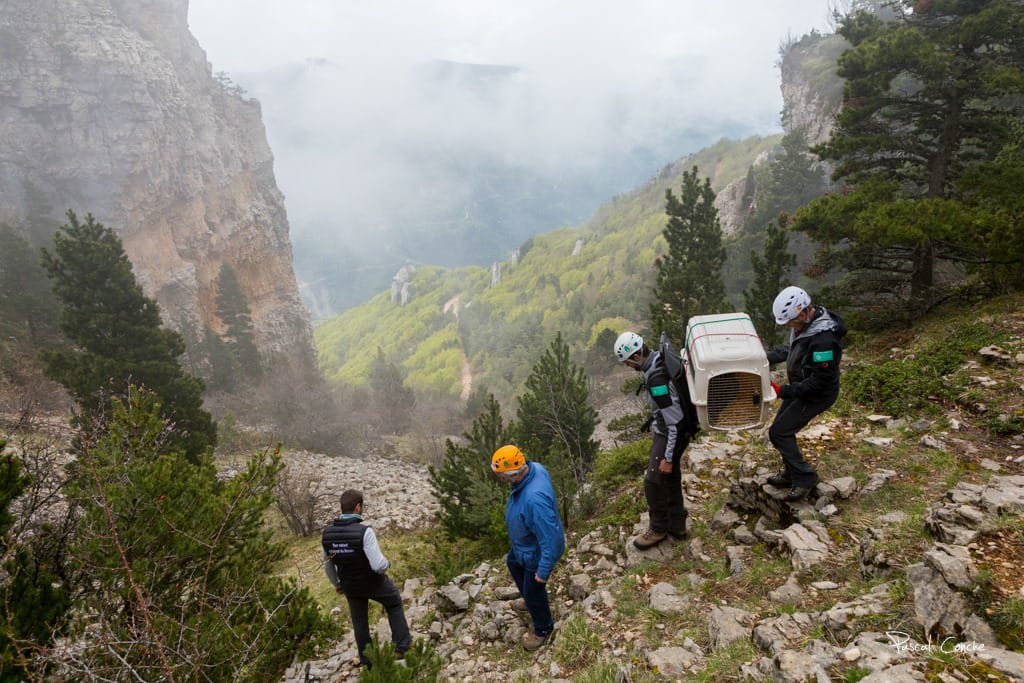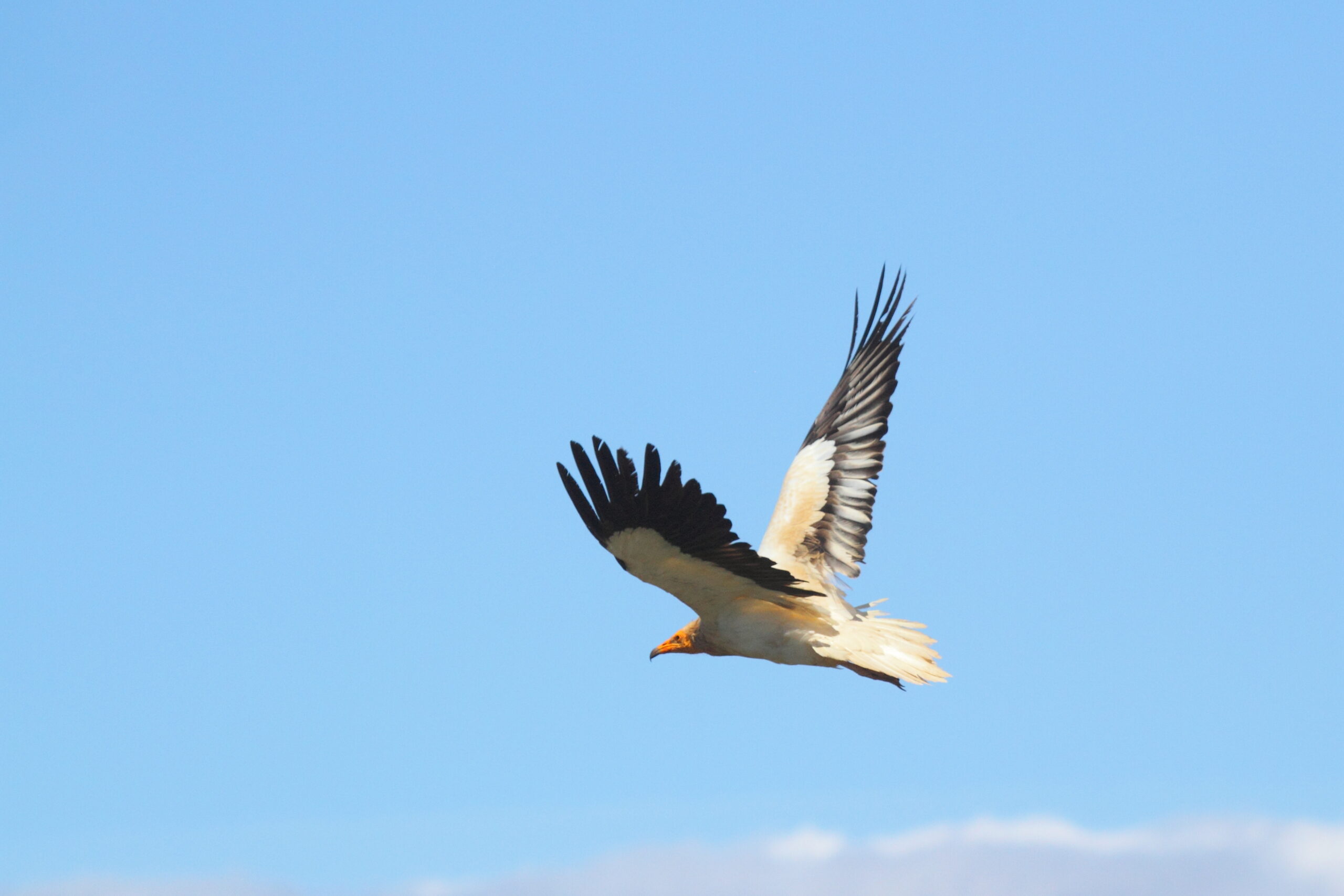The three adult Egyptian vultures captured and tagged this summer within the LIFE RUPIS project have now been named, after a vote in which hundreds of people voted on their names.
The male captured at the Escalhão supplementary feeding site in June was named Douro, while the female was named Faia. As for the male captured in July in the Bruçó supplementary feeding site, it was named after the site and the nearby village: Bruçó.
The other two birds followed had been named Poiares (the female found weakened in Poiares village) and Rupis (the bird captured and tagged last year).
Rupis and Bruçó did not breed yet – they are both 4th year birds, but Poiares, Douro and Faia bred in the Douro canyons – with Poiares and Faia successfully raising a chick – Douro unfortunately failed, probably even before the capture.
And while the other birds are still in the area, some still attending nests with young (see photo), the female Faia started its autumn migration – she spent her first night on the long migration route near Cáceres in Extremadura in Spain (see map).
All the 5 birds are equipped with a GPS tag that have been providing the project with valuable information about their detailed movements.
You can follow the movements of all these birds at our website here – https://www.4vultures.org/our-work/monitoring/egyptian-vulture-online-maps/
The LIFE RUPIS project aims to implement actions to strengthen the populations of the Egyptian vulture (and the bonelli´s eagle) at the trans-border Douro, by reducing the mortality of these birds and increasing their breeding success. The Egyptian vulture is the smallest vulture in Europe, and it is classified as “Endangered” – in Europe its populations have declined by 50% over the last 40 years.
The project includes equipping electric lines against electrocution, several actions that aim to minimize the threat of illegal poisoning, targeted management of over 1,000 hectares of important habitats for the species and also the creation of a network of supplementary feeding stations.
The project is implemented by the VCF and partners, including SPEA (BirdLife in Portugal), ATN and Palombar (regional conservation organisations in NE Portugal), the Junta de Castilla y Leon & the Fundación Patrimonio Natural de Castilla Y León, the Portuguese electricity distributor EDP-D, the Portuguese statutory conservation agency ICNF and the Portuguese environmental police force (GNR), and is co-funded by the MAVA Foundation.
Photo: António Monteiro, ICNF






